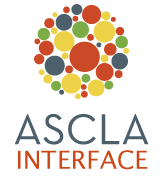By Janice Rosen, librarian, Library Services for the Deaf Community, Adaptive Services Division, DC Public Library
On Sunday, June 27, the DC Public Library and the District of Columbia Association of the Deaf co-sponsored an afternoon seminar, “Libraries, Access, and ASL Literature: The Deaf Community Shares Our Not-So-Silent Stories,” in conjunction with the 2010 ALA Annual Conference. The goal of the seminar was to help librarians create libraries that support the deaf community’s efforts to be understood as a cultural and linguistic minority, and to have resources on the shelves that would accurately reflect the deaf community’s culture and language.
The topics covered in this seminar were: “Deaf Gain Theory,” “Building Bridges: Finding Deaf Community Members,” “Re-defining the Deaf Community Patron,” “A Parent’s Experience,” and “Introduction to Elements of ASL Literature.” The highlight of the afternoon was a presentation by award-winning children’s author Emily McCully. The author shared her experiences writing the book My Heart Glow: Alice Cogswell, Thomas Gallaudet and the Birth of American Sign Language. Before she started the book, she hardly knew anything about deaf history or culture. She said that it was her son who encouraged her to write, and was inspired to write about it by her son Nathaniel’s “enthusiasm for sign language and deaf education and its history,” she said. McCully credited Gary Wait, archivist at the American School for the Deaf, for helping her with her research and imparting the story of the founding of the school. The story brings together Dr. Mason F. Cogswell, father of Alice, the deaf girl at the central focus of My Heart Glow; Thomas Gallaudet, who traveled to Europe to study teaching methods for deaf children at the request of, and with support of Cogswell; and Laurent Clerc, a gifted deaf teacher from Paris whom Gallaudet met and brought to America to implement his knowledge and teaching. Together, these key players brought about the founding of the American School for the Deaf in 1817—the first permanent school for the deaf in the Western hemisphere.
McCully went on to speak about the challenges of representing Alice’s writings in My Heart Glow. Above all, she wanted to show readers exactly how Alice wrote—including her language challenges. While this accuracy has posed a problem from the perspective of McCully’s publisher, she said that the deaf community loves the book, because of the honest portrayal of Alice, and has actively been promoting it. ASL Tales, a publisher of ASL literature, currently intends to make a video presentation of the book.
The seminar concluded with an informal reception that offered participants a chance to talk with publishers and/or distributors of ASL‐related materials.
Emily Ferren, director, Charles County Public Library in Maryland, who attended the program at the program that afternoon, said, “It was very well organized with lots of opportunity for networking. The program was a combination of information, speakers, and resources. There was ample opportunity to meet with vendors, leaders in the deaf community, and librarians who are inclusive by serving everyone in their local area.”
Alice L. Hagemeyer, long time ASCLA member and library advocate for deaf diversity, who was involved in the program planning, commented, “Both members of the deaf community and librarians have learned together about the differences between ASL literature and deaf literature. These literatures will support deaf people’s efforts to be understood by the public as people first and as having their own culture and language. This seminar is a beginning for both groups to work together on future deaf cultural programs in local communities.”
While plans are underway for a similar program at the 2011 ALA Annual Conference in New Orleans, we encourage you to stay in touch via Facebook by searching for “Librarians Learning from the Deaf Community” and clicking “Like” at the top of the page.
